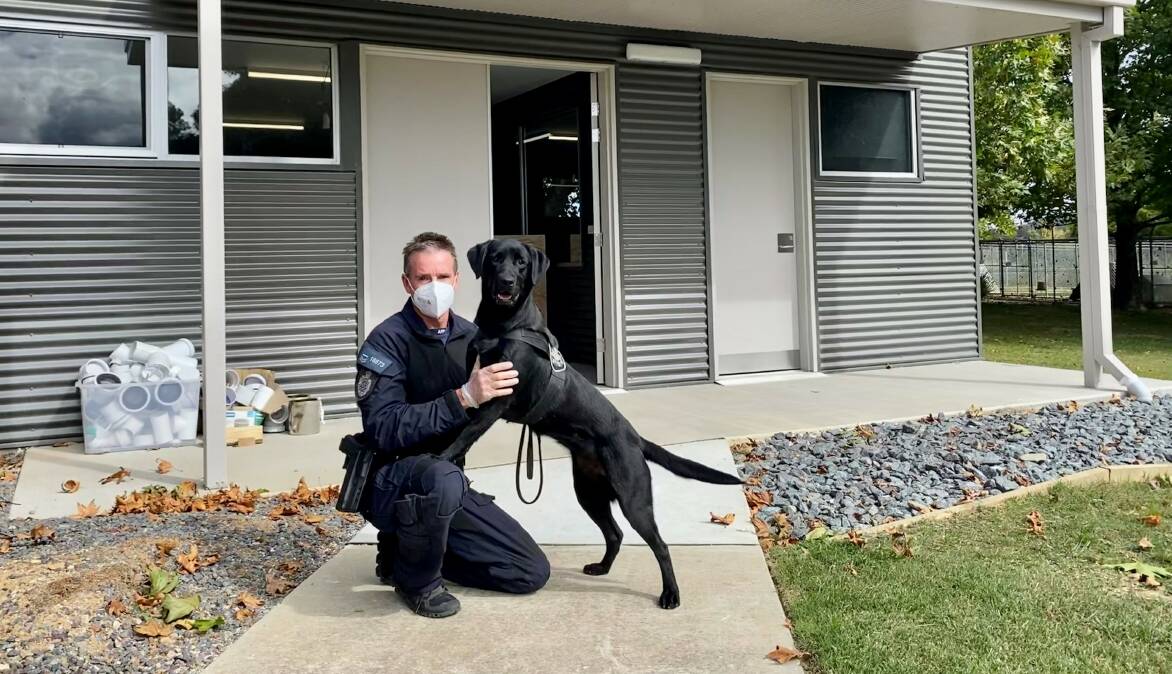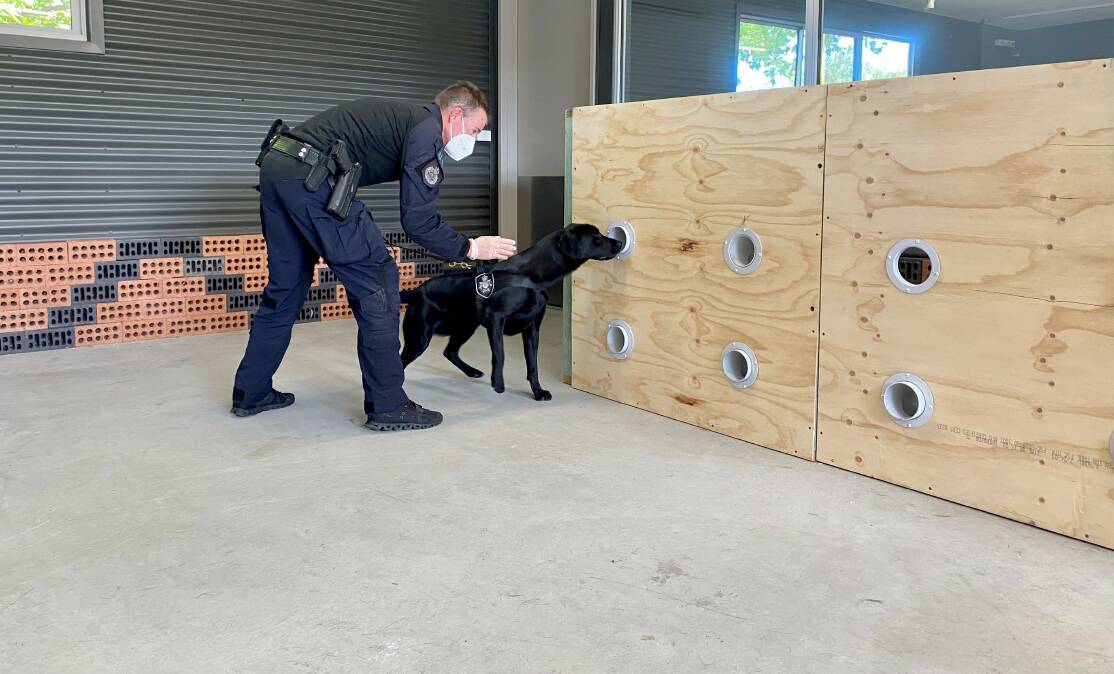
If the dogs on the federal police canine technology detection team were sports stars, they would be the elite, four-legged equivalents of a David Pocock, Roger Federer or Lance Franklin.
They are, as the head of the AFP K9 team described them, the "top 1 per centers" of an already highly-trained, multi-capability police dog unit based out of the Majura training centre.
"These are pretty special animals," acting Inspector Mark Holmes said.
Technology detection using canines is one of the very latest capabilities to be developed by the federal police.
It began with a visit to the US by two AFP officers six years ago to assess the cutting-edge work being done there, followed by a full evaluation on how to build a similar capability here.
"The [AFP] Commissioner [Reece Kershaw] had a good look at how we believed we could make it work here and was very supportive," Insp Holmes said.
"It has taken a little time to develop and fine-tune the training program but we now have three dogs operationally trained and in the field, and nine more in training."
To date, the three technology dogs have conducted 74 searches - some within the ACT but mostly interstate - and detected 348 items.
A purpose-built training annex for technology detection has now been added to the Majura K9 facility, funded through proceeds of crime seizures and the AFP-led Australian Centre to Counter Child Exploitation (ACCCE) set up in 2018.

"The technology detection dogs are kennelled with our other dogs and treated like all the others ... but in terms of training, the technology detection dogs are trained on their own, on specific tasks, and won't be mixed with the explosive, cash or drug [detection] dogs," Insp Holmes said.
Technology detection dogs are trained to sniff out a specific chemical - triphenylphosphine oxide (TPPO) which covers circuit boards to keep them from overheating - which is found on all thumb drives, SIM cards and hard drives.
The dogs can even sniff out tiny microSD cards less than one millimetre thick and can hold hundreds of gigabytes of data.
The intensity of the training program means these dogs only go to the senior handlers. If that handler previously had been working with another dog, such as one trained for drug detection, the drug dog is reassigned to another colleague because of the workload involved in training up a technology detection dog. "Once a technology detection dog is fully trained, it can go out into the regions to work for up to three months but then it has to be brought back to us at the training centre for re-evaluation," Insp Holmes said.
Labradors have been found to be the most suitable breed for the technology role although other breeds, including German short-haired pointers, were being assessed.
"Predominantly our TD dogs come from Border Force; they know what we are looking for with this particular capability," Insp Holmes said.







